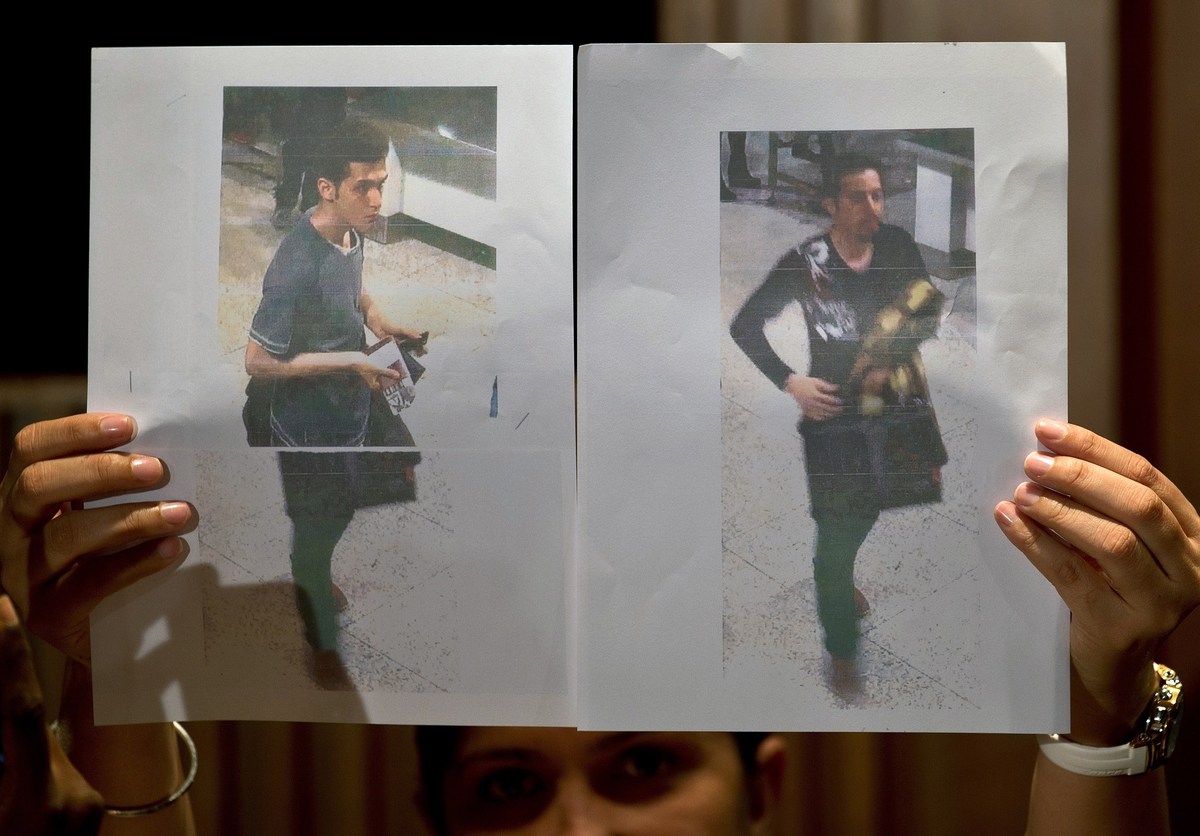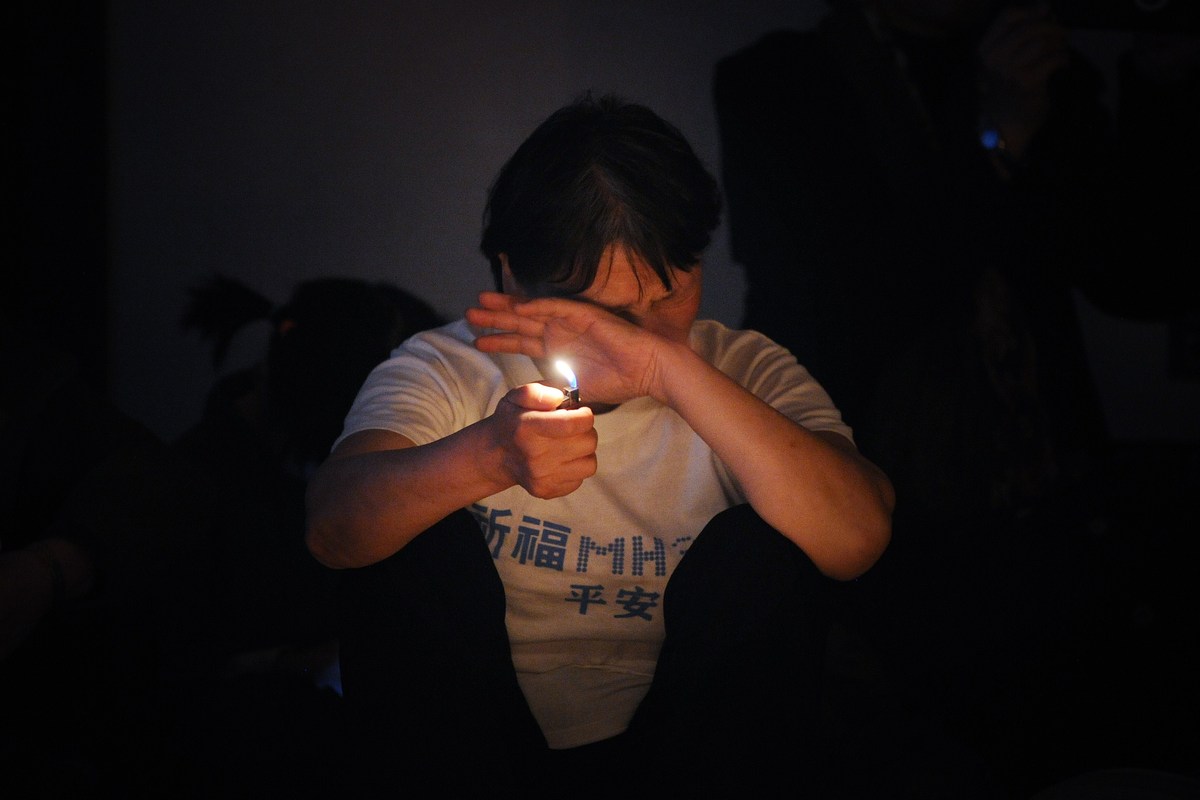MH370: Ewan Wilson & Geoff Taylor Say They Know What Happened To The Missing Malaysia Airlines Flight
This the joint theory of veteran commercial pilot Ewan Wilson and investigative journalist Geoff Taylor, whose book Good Night Malaysian 370: The Truth Behind The Loss Of Flight 370, was released last month.
The plane and its 239 passengers vanished on 8 March en route to Beijing from Kuala Lumpur.

Geoff Taylor (left) and Ewan Wilson believe the pilot of MH370 deliberately deprived the passengers of oxygen and then ditched the plane in the Indian Ocean
The authors say the most likely scenario is that pilot Zaharie Ahmad Shah deliberately depressurised the cabin, thereby depriving those on board of oxygen and causing them to lose consciousness for up to four hours before the Boeing 777 disappeared beneath the waves.
Although oxygen masks would have dropped down automatically from above the seats, the available supply was limited to just 20 minutes.
Those unable to grab a mask, including sleeping passengers, would have passed out within the space of a few minutes.
The entire 'ghost plane', including her cabin crew whose air supply is only marginally longer, would have slipped into a coma and died shortly after from hypoxia.
Shah, who locked his co-pilot out of the cockpit, survived long enough - either by re-pressurising the aircraft, or from breathing his own, more extensive air supply - to evade radar and "execute his master plan", the pair conclude.
They say he then performed a controlled ditching in the sea, which would explain why no debris has been found because the plane landed and sank in one piece.

The findings are backed up by an earlier report from the Australian Transport Safety Bureau
Wilson, a New Zealand-based air accident investigator and the founder of Kiwi Airlines and a commercial pilot himself, arrived at the shocking conclusion after considering "every conceivable alternative scenario".
An earlier report from the Australian Transport Safety Bureau (ATSB) also concluded that passengers may have died from hypoxia, and Malaysian authorities have previously named Shah as their prime suspect.
But the ATSB report contained no new evidence from within the aircraft and, until now, the pilot's alleged premeditated actions - and the disturbing scenario that may have played out in the cabin - have never before come to light.
Wilson said: "One of our objectives in writing this book was, in some small way, to convey the human stories of the tragedy. Our other, more important task was to pursue the truth about what really happened; that is one small contribution we felt we could make to this whole, terrible affair.

A photo of Zaharie Shah (top right) and co-pilot Fariq Abdul Hamid (top left) atop a poster appealing for the missing plane to 'please come back'
"We could never have foreseen the information we uncovered, or their implications. Neither could we have imagined the horrific scenario that our research suggests took place on board that fateful plane."
Wilson and Taylor's entire scenario makes for difficult reading. They believe that Shah, who they have concluded was suffering from mental illness, tricked his co-pilot Fariq Abdul Hamid into taking a break about 40 minutes after take-off.
After locking Hamid out of the cockpit, Shah made his last broadcast to air traffic control - "Goodnight, Malaysian 370" - before switching off the aircraft's air-to-ground communication links, they write.
Alone at the controls, they claim he took MH370 up to 39,000 feet and depressurised the aircraft, giving passengers crew less than 60 seconds of Time of Useful Consciousness (TUC) time.
But Shah could not have prevented the plane's oxygen masks from automatically dropping down, or an automated emergency announcement in English.
However Flight 370 was a night flight and with the cabin lights off, the majority of passengers would have been asleep, or close to it. Additionally, for 227 of the 239 passengers, English was not believed to be their first language.

Feng Zhishang cries as family members mark the birthday of his son Feng Dong, a passenger onboard the Malaysia Airlines flight MH370
Cabin crew would have tried to help those on board, but would have had to have donned their own face-masks first.
"It would have been a frightening and confusing time throughout the cabin," Taylor said.
"By the time some of the passengers had woken up groggy, heard the commotion and looked around in confusion, it would have been too late for them.
"Those passengers who did not react within 60 seconds or less would have lapsed into unconsciousness and death would have followed within four to six minutes."
Those who had found a mask would have had between 12 and 22 minutes of breathing time before blacking out.
The cabin crew's oxygen supply would have lasted for about 70 minutes, depending upon the height of the aircraft.
By the time MH370 returned to cruising altitude, everyone on board would have perished.
Shah would have had three hours' worth of oxygen - plenty enough, the authors believe, to carry out the "final act of his performance".
They conclude that he set a course for the southern Indian Ocean and, after the fuel ran dry, glided the aircraft for a further 100 nautical miles before performing a controlled ditching on the surface of the water.
Wilson, a trained commercial pilot, said: "Shah was a man known for his methodical, thorough nature, for his love of the technical, and probably for his ego, too.
"This would have been his final sad act to his family and to the world: 'find this one'."










0 comments:
Post a Comment